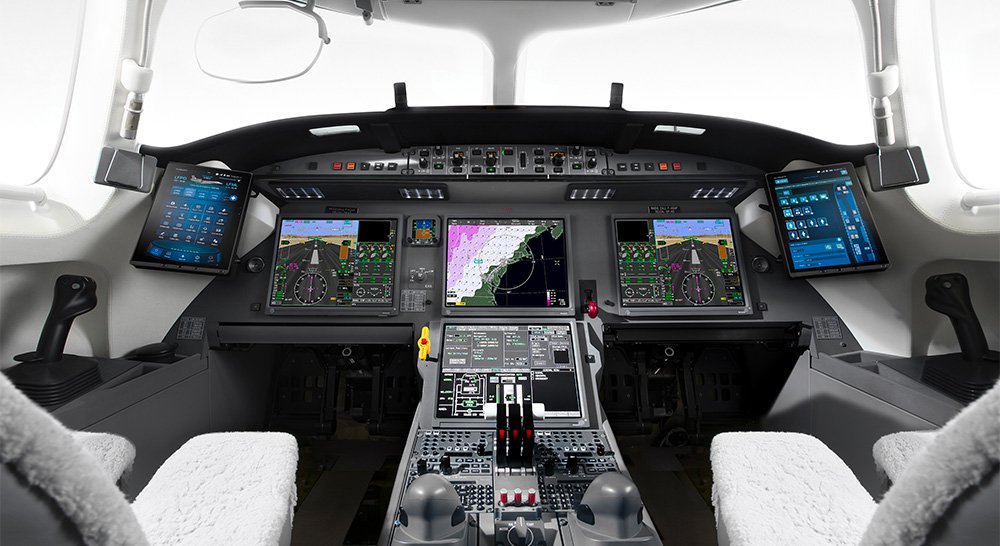- 70% of aircraft accidents are caused by human error
- there are factors on a flight that affect human abilities
- you have to be in good health to fly a private jet effectively
- sight and orientation are reduced when flying
- psychology can also cause mistakes
Whether you are thinking of piloting yourself using a private jet rental, or flying your private jet, there are human factors to consider in order to fly better and safely.
A good pilot must not only know the technical characteristics of his private jet but also know its capabilities and physical limitations in order to make effective decisions that guarantee flight safety. Human errors are common in flying a private jet or an airliner.
Pilots are constantly bombarded with different information. Every minute the flight conditions change, due to temperature, weather conditions, fuel, altitude, engine operation. Sometimes ice prevents the operation of altitude sensors, called pitot probes, resulting in the need to interrupt autopilot and pilot the aircraft manually, roughly calculating the attitude. Even an experienced pilot can find himself facing dangers he has never encountered. It can also happen that a pilot can fly for decades making mistakes that do not cause any accidents, until one day the conditions are right for a disaster caused by his bad habits. This is why we study human behavior from the design of cockpits, whose instruments seek to facilitate pilots’ understanding as much as possible, avoiding any misunderstanding or dramatic error. For example, the controls for managing the landing are shaped like a wheel, those that operate flaps are shaped like a flap.
Two categories of potentially dangerous human factors
The first category is anything related to the medical condition of the pilot. The second concerns psychological issues, such as decision-making capacity and risk management.
The pilot’s medical conditions
To safely fly a private or commercial jet, you need to be in good health. Several are the factors that can affect the health and make the physical condition of the pilot unfit to fly:
Medication: Cabin pressurization can cause unexpected reactions to certain medications, which is why any pilot who takes real medication undergo a medical check-up to find out if it is safe to fly.
Alcohol: the percentage of alcohol in the blood allows a driver and 0.04%, exactly half of what is tolerated for driving a car. Normally, a pilot should not touch alcohol 24 hours before taking off, which is what many airlines and private jet charter companies require.
Stress: Prolonged stress can cause a pilot to stop reacting quickly to dangers, as stress wears out and can cause apathy.
Fatigue: If a pilot is therefore not sufficiently well, he may find himself in a state of chronic fatigue which seriously affects his ability to react and to make timely decisions.
Emotional disturbances: If a pilot has suffered some recent emotional shocks, for example the loss of a loved one, or is depressed, or has other psychological conditions, he should undergo examinations before continuing to fly. German Wings pilot Andreas Lubzyck was taking large doses of neuroleptics, and he was depressed for fear that he would not be able to continue his career. Eventually he decided to commit suicide crushing into a mountain his Airbus A320, with all the passengers on board. Negligence regarding the control of his psychiatric condition has been singled out.
Insufficient oxygen: above 3000 m altitude, an aircraft must be pressurized, or the pilots must receive supplemental oxygen. If there is not enough oxygen, they can develop hypoxia, which seriously affects their physical and mental condition.
View: The view of an airplane is affected by several factors. For example, if the airstrip is slightly sloped, it may appear closer. At night the darkness can hinder a correct view of the airstrip.
Orientation: flying on an airplane can greatly distort the sense of orientation. For example, the perception of our weight on the seats is altered by the plane, making it more difficult to understand whether the plane is descending or ascending. The same goes for the senses of balance, determined by the vestibule, inside our ears, which functions less well due to the pressurization on the plane.
Risk factors due to psychology of the pilot
On a private jet, there are plenty of decisions that need to be made quickly and without getting emotional or nervous conditioning. A pilot may be too nonchalant, too sure of himself, or on the contrary too little confident in his ability to remedy difficult situations.
Pilots are also susceptible to communication errors, and some people are poor communicators. A pilot may also be too macho or exhibitionist, wanting to prove his skill at the expense of safety, or he may not be obedient enough to the authority of flight controllers, laws or airports.
Another gap that can be a source of danger is pilots with a lack of team spirit, who do not know how to cooperate well with the rest of the crew or with airport personnel.
The dirty dozen
12 human errors in aviation to watch out for: the “Dirty Dozen”
A common way to identify dangerous models is known as the dirty dozen. The twelve errors are:
Lack of communication
Complacency
Lack of knowledge
Distraction
Lack of teamwork or CRM (crew resource management)
Tiredness
Lack of resources
Pressure
Lack of assertiveness
Stress
Inconscience
Lack of safety culture.


